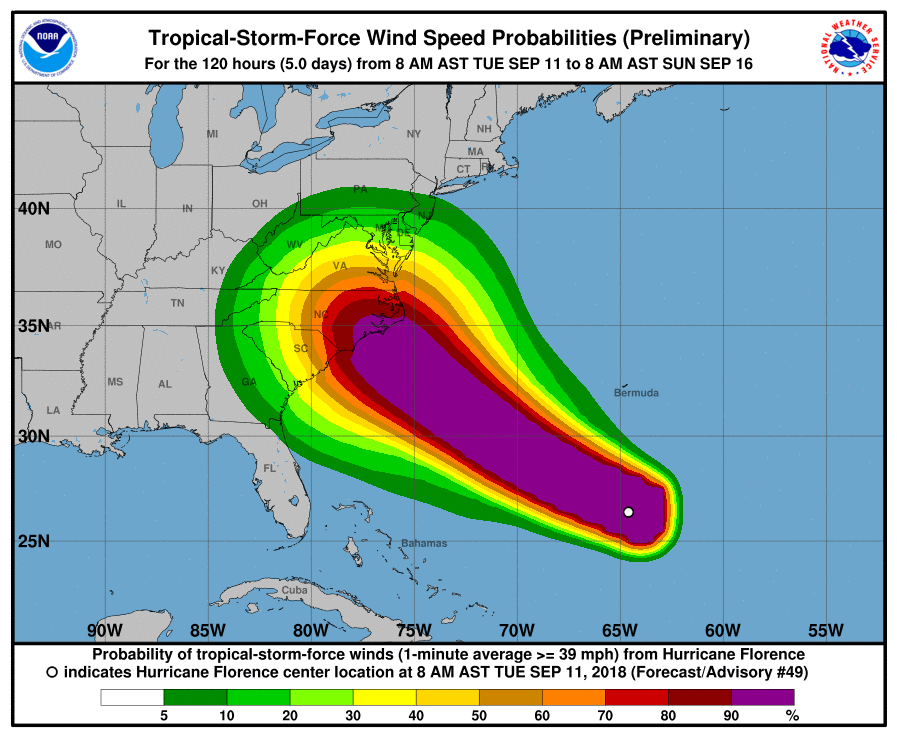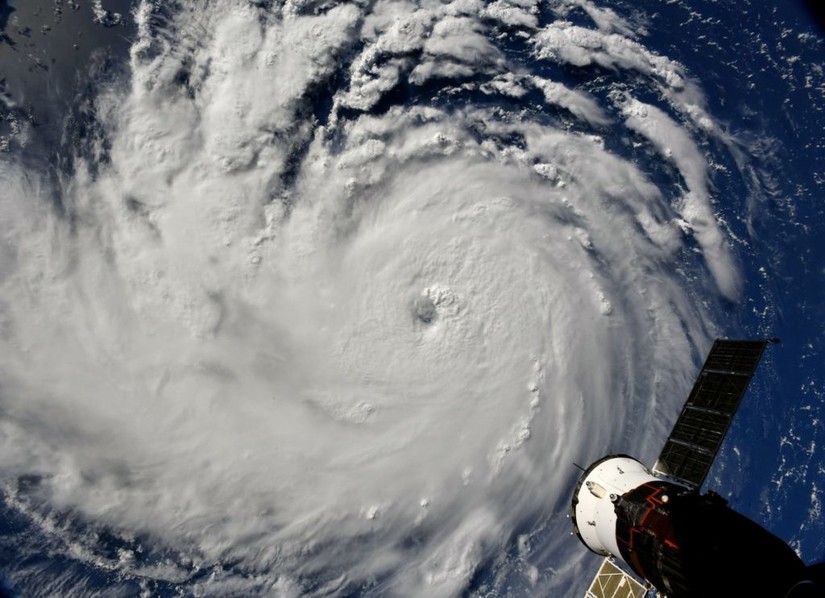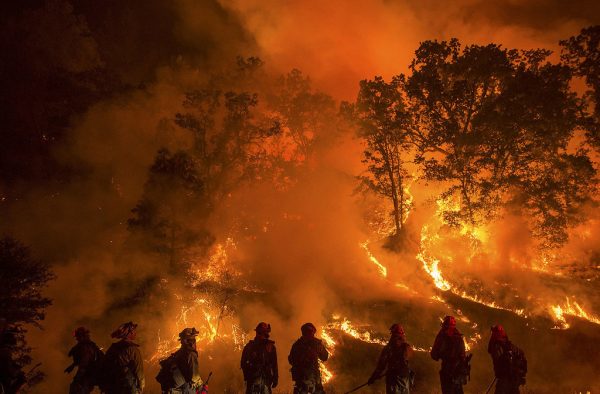Hurricane Florence continues to leave its mark
POSTED September 24, 2018

Hurricane Florence started taking its toll on September 13, 2018 in the Carolinas. Winds started at 84 mph on the edges of the storm and 195 mph tropical winds, classifying it as a category 2 hurricane. The storm is predicted to move slower than usual, bringing in 10 trillion gallons of rainfall.
There was a mandatory evacuation called out, and if citizens in these areas chose to stay, they were given a 24 hour curfew. By the end of the first day, 13 were announced dead. As Florence began to charge on, more civilians realized just how strong the storm actually was, deciding to leave their homes and move to a safer place. The night of September 16, two more were pronounced dead and at least 170 were hospitalized. Florence was coming to an end, but the destruction it caused was far more than expected. September 18 saw the number of deaths spike to 32, and more than 60 percent of homes and businesses were still out of power. Over 700 rescues were made in the five days of the storm. Hundreds of towns and cities are still flooded beyond imagination, so many roads are blocked off and cities are left deserted. Helicopters and military trucks are making their way to survivors to hand out supplies and take people to safety. Recent hurricanes left multiple towns unprepared and already destroyed. The storm may be over, but the damage and flood waters are here to stay.













